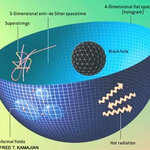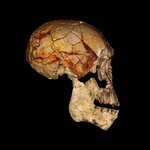Evolution

Using the family tree linking every known bird species, scientists now say that birds appear to be accelerating their rate of evolution. Most people did not predict that.
They spent five years creating their tree, using millions of years worth of fossil data stretching back to Dinosaurs. They then mapped where on Earth and when in history birds' diversification took place. Their paper in Nature contains results of how 9,993 bird species currently alive globally made it to where they are today. Based on previous studies, the researchers expected to see bird speciation slowing down, but…

Kids driving you crazy? Most parents don’t hesitate to pick up the phone and call grandma when they need a hand in caring for their children. Grandparents are often an invaluable resource when it comes to childrearing, and can be a lifesaver for frazzled parents everywhere.
A study led by Kristen Hawkes with mathematical biologist Peter Kim found that in a computer simulation of a population of chimpanzees the contribution of grandmothers in caring for infants and children increased the average lifespan by almost 25 years. Their findings ultimately support the ‘grandmother hypothesis’,…

Researchers have discovered that females with multiple sexual partners can be more fertile than those that are monogamous, and this because of an “overproduction” of sons. The study, published as a provisional article but already one of the most accessed in BCM Evolutionary Biology, helps to explain a puzzle haunting evolutionary biologist for decades: why so many females chase multiple sexual partners in a mating season, when this is costly and dangerous, and one is enough to fertilize all her eggs.
The discovery that the behavior increases their fertility (and allows them to…

“Anatomically modern humans” (AMH), or the first subspecies which bore the closest resemblance to modern humans, lived in Africa approximately 200,000 years ago (the exact time frame is a point of contention for most archaelogists, but we'll stick with this one). AMH inhabited a relatively small region of Africa until somewhere between 60,000 and 80,000 years ago, when our ancestors suddenly became restless and began to venture out into surrounding areas, eventually reaching Europe and Asia 40,000 years ago.
The rest, as they say, is history.
…

The idea that we are inside a simulation is true anyway (if we define “simulation” as being described as emergent from a computational substrate). Nick Bostrom, director of Oxford University’s 'Future of Humanity Institute', and others became famous with such more than 2000 years old ideas warmed up in fashionably modern lingo, see Simulation Hypothesis on Wikipedia.
The holographic universe: A “simulation” anyway!
Richard J. Terrile appeared on “Through the Wormhole”, a Science Channel show, where Richard discussed that our experience is something like advanced “The Sims”.
Richard J.…

While teaching to students algae I suddenly discovered that Blue green algae has been shifted to bacteria and named as Cyanobacteria. I strongly object to this though with no power but all reasons.Earliest creatures did not have power to evolve oxygen. They had only PS I and not PS IIProkayotic algae were placed as blue green algae in Cyanophyceae . They had power to evolve oxygen and have both the systems PSI and PSII like green algae. Only thing is they are prokaryotic. To remove them from algae and place them with bacteria has been justified on some contents on the mebrane system…

"Heritability" is a term used in many articles and through much of the scientific literature and invariably promotes the idea that it relates specifically to inherited traits. As a result, it is often assumed that the heritability of a particular trait relates to how much influence genetics has on the trait manifesting in an individual.
However, that isn't what it means.
Heritability attempts to address the relationship between nature (genetics) and nurture (environment), so that as each changes, the variation between individuals within a population can be estimated based on these…

For more than 180 years, the origin of Cerataspis monstrosa - monster larva - has been a mystery as deep as the ocean waters it comes from.
Researchers have been trying track down the larva that has shown up in the guts of other fish over time but found no adult counterpart. Until now.
George Washington University Biology Professor Keith Crandall cracked the code to the elusive crustacean's DNA this summer. It turns out this monster larva and the deep-water aristeid shrimp known as Plesiopenaeus armatus are one and the same: larvae and adult forms of the same species.
The crustacean's…

A recent, fascinating recent study is Decoding Animal Languages, by Con Slobodchikoff. At one level, it is an inspiring demonstration of how new technologies can liberate us from preconceptions and open new avenues of empathy, helping humans to understand the other species who co-inhabit this planet with us.
As Temple Grandin has pointed out, in her campaigns to reform the meat industry, we do not have to entirely abandon the omnivorous cravings of our caveman ancestry. But we are obliged to offer our fellow creatures the best deal that's compatible with our…

A face, a remarkably complete lower jaw, and part of a second lower jaw are exciting new fossils discovered east of Lake Turkana which confirm that there were two additional species of our genus living alongside our direct human ancestral species, Homo erectus, almost two million years ago.
The finds were uncovered between 2007 and 2009 by the Koobi Fora Research Project (KFRP), led by Meave and Louise Leakey.
Four decades ago, the KFRP discovered the fossil known as KNM-ER 1470 (or "1470" for short). The skull, readily distinguished by its large brain size and long flat face,…